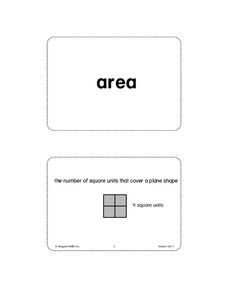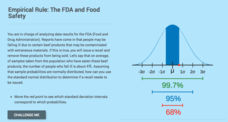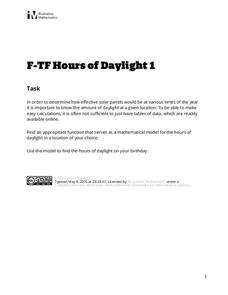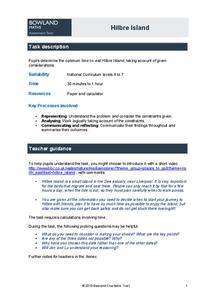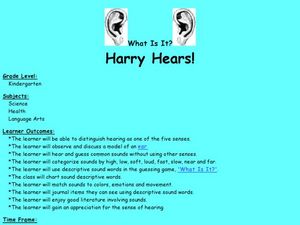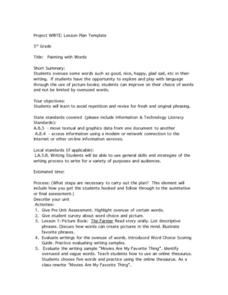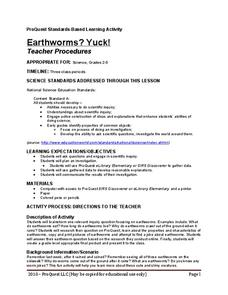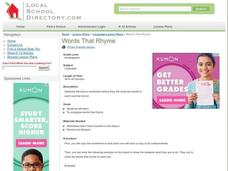EngageNY
Comparing Irrational Numbers
Build on your classes' understanding of irrational numbers by comparing their values. The 13th lesson in the 25-part module has individuals estimate values of both perfect and non-perfect roots. They finish by graphing these numbers on a...
Houghton Mifflin Harcourt
Unit 7 Math Vocabulary Cards (Grade 2)
Reinforce math vocabulary instruction with a set of flash cards. Fifty-six cards offer either a bold-face word or a picture representation equipped with descriptive labels. Terms include centimeters, gallons, square units, and more!
CK-12 Foundation
Basic Trigonometric Functions: Ladder Length
Climb the ladder to trigonometry. The interactive introduces trigonometric ratios and finding lengths of sides of right triangles created by a ladder and a building. Learners use the interactive to create triangles by moving the top of...
CK-12 Foundation
Right Triangles, Bearings, and Other Applications: Sailing Race
Help your class get their bearings when it comes to right triangles. Pupils determine distances traveled or components given the bearing of a sailboat using an interactive. The scholars develop a sense of finding the bearings of a given...
CK-12 Foundation
Computing Probabilities for the Standard Normal Distribution: The FDA and Food Safety
To recall or not to recall, that is the question. Using provided data, pupils calculate the percent of people that may fall ill on average. The scholars determine the standard deviation based upon the mean and the empirical rule, then...
CK-12 Foundation
Properties of Multiplication in Decimal Operations: Balloon Animals
Commutive and associative properties are the focus of a five-question interactive. Dealing with decimal multiplication and addition, mathematicians solve multiple-choice and true or false questions using a model that moves balloons along...
Illustrative Mathematics
Fred's Fun Factory
Spin to win! Individuals calculate the average number of tickets expected based on a probability distribution for the number of tickets per spin. Pupils use that information to determine the average number of tickets that can be won...
Illustrative Mathematics
Hours of Daylight 1
The midline of the mathematical model of the number of hours of sunlight is not 12 hours. Pupils use the modeling cycle to determine a function that will model the number of hours of sunlight at a location of their choosing. Using...
EngageNY
Chance Experiments
Class members are introduced to probability using terms such as impossible, unlikely, likely, and certain. Numbers between zero and one are associated with the descriptions of probability. Pupils find the likelihood of chance experiments...
Bowland
Hilbre Island
Young travelers plan a trip to Hilbre Island based on constraints on tides and time. They use a timeline to help determine the optimal day/time to make the trip.
Curated OER
ESL: Practice Using Present Progressive Tense
Small, cartoonish pictures of people expressing emotions and actions (blowing his nose, holding her head and frowning, dancing, smiling) provide the basis for writers to describe the feelings and experiences taking place. Help your ESL...
Curated OER
What Is It? Tommy Tastes
Students complete multi-curricular to learn about senses and sensory words. In this sensory words lesson, students discuss the five senses and the anatomy of a tongue. Students complete a food tasting activity and find descriptive words...
Curated OER
Harry Hears!
Pupils explore ear anatomy and the sense of hearing. In this hearing lesson, students discuss the five senses and view a model of an ear. Pupils place cotton balls in their ears to simulate loss of hearing. Students use descriptive words...
Curated OER
Imagine This
Students write descriptive words about colorful pictures and then write about a character. For this writing lesson plan, students have a character worksheet to fill out.
Curated OER
Painting with Words
Fifth graders discuss words that are over used in their writing such as good, nice, happy, glad sad, etc. they complete a survey about word choice then hear a story and discuss descriptive phrases used in the story and how they help to...
Curated OER
Planets
First graders study the planets in the solar system. In this planets lesson, 1st graders read Planets, then create a mobile containing all of the planets in the correct order. Students will label the planets with descriptive words.
Curated OER
Dream Bed
Students design and write descriptions of imaginary beds. In this interior design instructional activity, students use various art materials such as paint, fabric, boxes, and string to create a model of a bed. Students use descriptive...
Curated OER
Descriptive Writing About a Picture
First graders word process a topic sentence, two detail sentences and a concluding sentence about an image. They import a picture and change the font color of their writing.
Curated OER
High Frequency Words with Clip Art
Second graders invent sentences using high frequency words. In this literacy lesson, 2nd graders type simple sentences using high frequency words, and a clip art picture for each sentence.
Curated OER
Analyzing Unknown Words
Learners analyze affixes and how they affect word meaning. In this language arts lesson, students use charts to construct and deconstruct words to find meaning.
Curated OER
Picture Word Book
Students create a book. In this vocabulary and word identification lesson, students make a book by gluing pictures on construction paper, then the teacher writes words in the book to label each picture.
Curated OER
Sorting Words
Pupils investigate rhyming words. In this word study lesson, students are introduced to rhyming words and then sort out the words that rhyme and group them. A worksheet is provided.
Curated OER
Preprimer Word List
In this preprimer word list worksheet, learners color the words in the list and draw a line to connect matching words. Students do this for 10 words.
Curated OER
Words That Rhyme
Students identify rhyming words. In this word study lesson, students review the concept of rhyming by following examples written on the board. Students circle the words that rhyme in each group. A worksheet is included as a follow-up...



